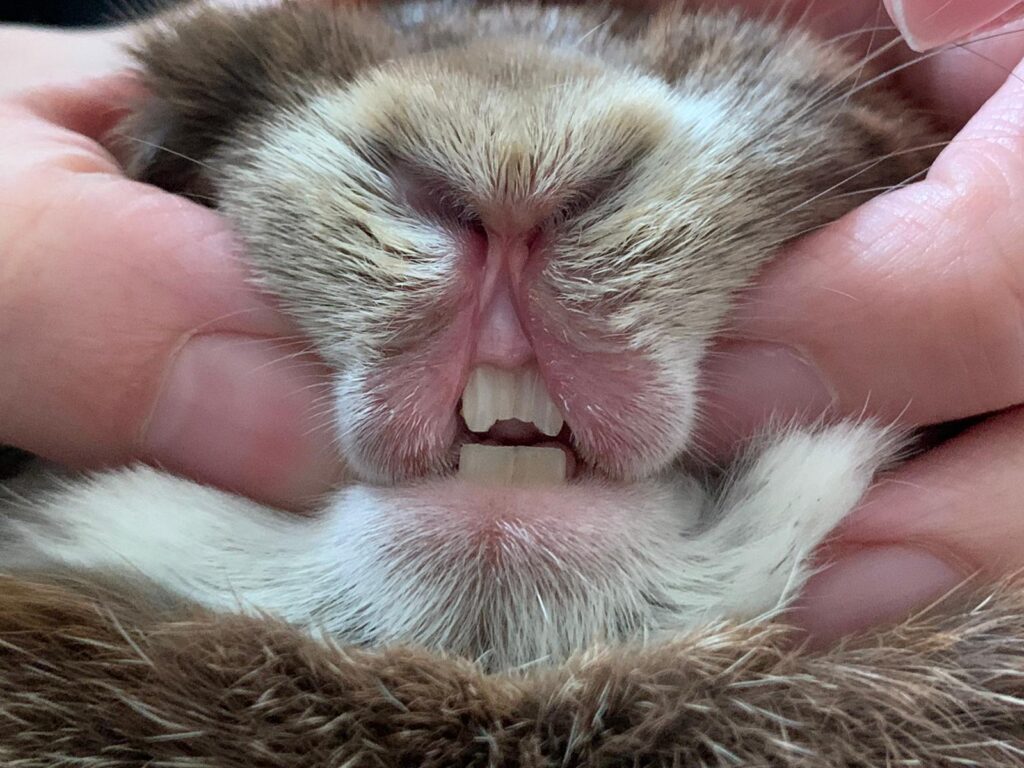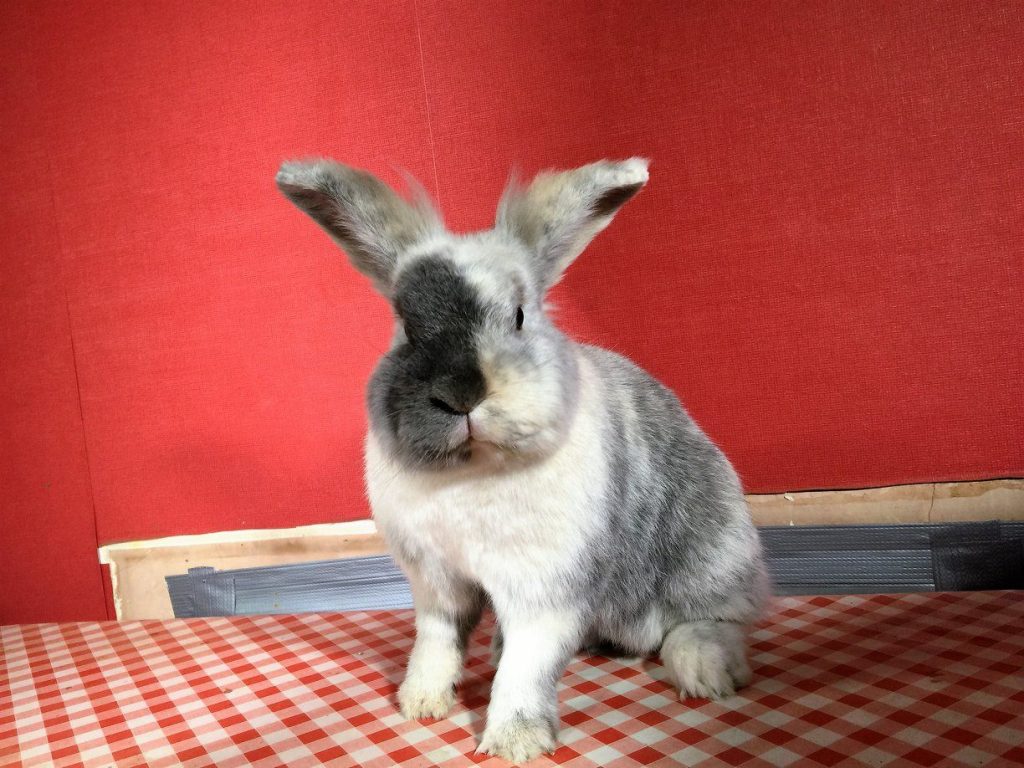Rabbits are Britain’s third most popular pet and it’s no wonder why; with their long ears, big eyes and cute noses they are irresistible. But, did you know that rabbits aren’t a low maintenance, cheap pet to keep? Many are purchased on impulse without proper thought into their care and long-term needs. Rabbits can live to be 10 years old, which is a huge commitment which many people do not take into consideration, leaving rescues overflowing with unwanted bunnies.
If you have a rabbit (ideally two, as these animals really do need the company of their own kind), it’s important to make sure they are in top health and it’s a good idea to do a daily health check on them to make sure you pick up any signs of illness quickly, as it’s easier to treat if you catch it as soon as possible. Here is a guide on how to give your rabbit a health check, however, if you have any concern over your pet’s health, you should contact your vet right away.
When health checking, we start at the front of the rabbit, so we aren’t putting any nasties from their back end towards their face. It’s good hygiene!
Nose
A rabbit’s nose will twitch because this action will move the sensitive organs in their nose and expose them to more air, allowing them to smell scents more efficiently. A relaxed rabbit will twitch its nose slowly, whilst a fast twitching nose could mean the rabbit is stressed, or interested in something. A rabbit’s nose should be clear, without any discharge and you shouldn’t be any audible breathing noises.

Rabbits can get upper respiratory infections due to their delicate respiratory systems, and probably the most well-known one is ‘snuffles’ which is a bacterial infection usually caused by Pasteurella multocida. Rabbits with dental issues are prone to developing snuffles. This is because the roots of the teeth pass very close to the tear ducts, and the roots can push upwards, obstructing the tear ducts, stopping the normal drainage of tears through the ducts, and allowing bacteria to grow. You should also check the nose for any lumps or nodules, as this could indicate another health issue.
Mouth
The mouth should be clear without any signs of dribbling or drooling. Check the lips for scabs.
Teeth
Rabbits teeth continuously grow throughout their lives, and it is important to provide them with the correct diet to include lots of hay which helps them wear their teeth down. Getting the diet right is very important! If you gently pull the rabbit’s lips back, you will be able to see their front teeth – there will be two incisors visible at the top and bottom.
Rabbits can suffer from malocclusion which is when the teeth do not meet correctly so you need to check they are straight and growing the right way. Check the gums are a healthy pink colour (red or purple colours are a concern). You won’t be able to check the back teeth – this will need to be done with an otoscope by your vet. You can, however, feel the rabbit’s cheeks, to check for any lumps and make sure the face feels symmetrical. If a rabbit is in pain it will grind its teeth, so get to know your bunny so you can be aware of what is normal and what isn’t. Look for;
- Your rabbit showing interest in food, but not eating.
- Pain or swelling under the jawline
- Bad odour coming from the mouth
If you notice any of these, you need to take your rabbit to see your vet.

Eyes
The eyes should be bright and clear of discharge, and there shouldn’t be any cloudiness, inflammation, redness, or any cuts or abrasions on or around the eye. Also, look for signs of weeping or discharge.

Common issues with the eyes are;
- Blocked tear ducts – Dirt and debris can clog up the tear duct, causing weeping eyes.
- Teeth issues – Overgrown teeth can cause the eyes to weep and can cause abscesses behind the eye.
- Eye infections – Redness or swelling can indicate this and rabbits can also get infected tear ducts. Some eye infections can spread, such as conjunctivitis, so it’s important to get treatment from your vet as soon as possible.
- Allergies – Weeping eyes can be a symptom of an allergy from dusty bedding.
- Scratches on the eye – These can lead to ulcers, so it’s vital to get your rabbit to the vet should you suspect this. A rabbit with a scratch on their eye will be reluctant to open the eye and it may appear cloudy.
- Myxomatosis – This is a highly contagious and potentially deadly virus which should be vaccinated against. Initially, infected rabbits will have inflamed eyes, amongst other symptoms. Any rabbit with suspected myxi should be taken to the vet immediately.
Rabbits with pink or red eyes have poor vision, and will ‘scan’ by moving their head from left to right to try and focus. Rabbits generally have poor vision anyway and rely on their other senses more.

Ears
Feel the outer side of the ear, checking for any lumps or scabs. Look inside each ear canal – There shouldn’t be any odour or dirt, as this could mean ear mites are present. Check for any flaking skin in the inner and outer ear, too. Lop rabbits, in particular, are prone to ear abscesses, so rub around the base of each ear and compare them as any abnormalities could indicate an abscess.

Although this blog covers how to give your rabbit a health check, not every health check will be the same as rabbits have been selectively bred to have certain features. A result of this means not all bunny ears are the same. Netherland dwarfs, for example, have very small ears, whilst English Lops have very long ears. Rabbits with larger ears can catch them, causing cuts or tears. Some rabbits may fight, again this can lead to the ears becoming damaged. Some rabbits are deaf, although this isn’t a huge problem for bunnies as they can rely on their other senses, however, if you feel that your rabbit has difficulty in hearing, it’s worth contacting your vet for advice.
Legs, Feet and Claws
This can be checked by sitting on the floor with your rabbit and watching them move. They should do so without any signs of lameness or limping as rabbits have very fragile bones. The feet should be fluffy and clean – white rabbits can get stained fur from the grass or straw. Look out for bald patches or soreness.
The nails shouldn’t be too long and you can clip them at home, however, I do recommend getting someone experienced to show you how to do this before attempting it yourself. Rabbits have a quick running through the nail which will bleed if you cut it. It is easier to see on white nails, however, sometimes you cannot see it at all on black nails. You can let your rabbit exercise on a hard floor so they will wear their nails down naturally, and encouraging them to dig in boxes will also aid this.
Body
Run your fingers around the body, checking for any lumps or scabs. You can purchase a set of scales so you can monitor your rabbit’s weight to ensure they maintain a steady weight. Fast weight loss or gain will need investigating by your vet. Overweight bunnies can have lots of problems, such as not being able to clean their back end.
Fur
Part the fur and look at the skin. Dandruff can indicate mites, which will need treating with medication from your vet. Rabbits do moult regularly, so you may want to get your rabbit used to being brushed so you can help them get rid of the dead coat. Look out for bald patches, or abrasions to the skin.
Backend
Rabbits produce two types of poop. The first type is the hard, round balls, and the second is a softer type which they will eat (don’t worry, this is fine and even does them good!) Rabbits who are prone to getting a dirty backend are overweight, elderly and those with health conditions as they are not always able to reach down to eat this soft poo. The result of this is it will get stuck around their bottom. If you notice any dirtiness, you can use warm water, baby shampoo and cotton wool to clean it off. I really do not recommend submerging your rabbit in water, as this is very stressful for them. If your rabbit frequently becomes dirty, you should get a vet to identify the underlying cause.

You should get into the habit of checking your bunny’s bottom twice a day to make sure it is clean. Any poo stuck on them, can not only cause soreness on the skin, but it can also lead to flystrike. Flystrike, as the name suggests, is when flies lay their eggs around the rabbit’s anus. These eggs will quickly hatch into maggots, where they will begin feasting on your rabbit. Check your rabbit for signs of eggs and if you discover any, they need to see the vet immediately. You can get products to repel flies which can be applied directly onto the rabbit.
How To Give Your Rabbit A Health Check – Includes Any Changes In Temperament
A sudden change in your rabbit’s behaviour can tell you that something isn’t quite right. Quiet, hunched up rabbits or sudden aggression are things to look out for. A rabbit in pain may start biting or seem irritable so any changes in your bunny mean you should have them checked by a vet if they aren’t their usual self.
Rabbits reaching sexual maturity will usually change how they behave and can become aggressive. The males will also spray urine and the females become very territorial, and these are some of the many reasons you should get your rabbit neutered as soon as they are old enough. Leaving it too long can cause these behaviours to become learnt behaviours, which means they could still be aggressive if you have them neutered because even after a period of when the hormones have gone, the rabbit has still learnt to behave this way.
This is just a general overview of what you should look for and I hope it’s helped you learn how to give your rabbit a health check. Get to know your rabbits by spending time with them every day so you can see what is normal and what isn’t. It is a good idea to have a first aid kit to hand at all times, but if you have any concerns it’s best to consult your vet for help.

